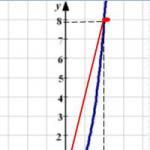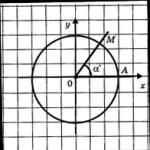Unified Tariff and Qualification Directory of Works and Professions of Workers (ETKS), 2019
Issue #24 ETKS
The issue was approved by the Order of the Ministry of Health and Social Development of the Russian Federation of March 28, 2006 N 208
Chemical reagents production operator
§ 198. Operator for the production of chemical reagents of the 2nd category
Job Description. Implementation of individual stages of the technological process for the production of chemical reagents under the guidance of an operator of the production of chemical reagents of a higher qualification. Preparation and loading of raw materials used in the apparatus. Unloading and transporting the product. Cleaning serviced equipment. Participation in technological operations not related to change chemical composition initial substances (dissolution, filtration, extraction, etc.).
Must know: technological process for the production of chemical reagents; scheme of the serviced area, its fittings and communications; device, principle of operation of the serviced equipment; physical, chemical and technological properties of raw materials used and finished products, state standards and specifications on them.
§ 199. Operator for the production of chemical reagents of the 3rd category
Job Description. Conducting a simple technological process for the production of one reactive product (in particular, in production using radioactive and stable isotopes). Carrying out technological operations that are not associated with a change in the chemical composition of the starting materials (dissolution, filtration, pressing, evaporation, crystallization, centrifugation, drying, grinding, and others). Control and regulation of technological parameters of the process of production of chemical reagents according to the indications of instrumentation, analysis results and visually. Determination of the moment of completion of the ongoing technological operation. Monitoring the operation of serviced equipment. Accounting for the consumption of raw materials used and the yield of the finished product. Troubleshooting equipment, preparing it for repair.
Must know: technological process for the production of chemical reagents; scheme of the serviced area, its fittings and communications; device, principle of operation of the serviced equipment; rules for using the applied control and measuring instruments; the technological regime of the process of production of chemical reagents and the rules for its regulation; physical, chemical and technological properties of raw materials used and finished products, state standards and specifications for them.
§ 200. Operator for the production of chemical reagents of the 4th category
Job Description. Maintenance of the technological process for the production of one or more reactive products (in particular, in production using radioactive and stable isotopes). Carrying out one or two operations associated with changing the chemical composition of the starting substances (halogenation, sulfonation, hydroxylation, and others), as well as dissolving, condensing, filtering, squeezing, crystallizing, and others in accordance with work instructions. Preparation of used raw materials and materials, dosage and loading them in specified quantities into the apparatus. Control and regulation of technological parameters and the course of chemical reactions according to the indications of instrumentation and analysis results. Troubleshooting of serviced equipment.
Must know: technological process for the production of chemical reagents; scheme of the serviced area, its fittings and communications; device, principle of operation of the serviced equipment; rules for using the applied control and measuring instruments; the technological regime of the process of production of chemical reagents and the rules for its regulation; physico-chemical and technological properties of raw materials used and finished products, state standards and specifications for them; sampling rules; analysis methodology.
Work examples.
Preparation of sodium ethylate and sodium methacrylate, hydrogen chloride.
§ 201. Operator for the production of chemical reagents of the 5th category
Job Description. Maintenance of the technological process for the production of one or more reactive products (in particular, in production using radioactive and stable isotopes). Carrying out technological operations (at least three) associated with a change in the chemical composition of the starting materials (halogenation, sulfonation, hydroxylation, diazotization, and others), as well as carrying out dissolution, filtration, crystallization, centrifugation and others in accordance with work instructions. Preparation, calculation and loading of raw materials and materials used in strictly specified quantities. Control and regulation of technological parameters of the process of production of chemical reagents according to indications of instrumentation and analysis results. Carrying out complex chemical reactions using explosive and flammable, toxic substances. Carrying out dismantling and assembly of technological schemes and installations. Maintenance of equipment and communications.
Must know: technological process for the production of chemical reagents; scheme of the serviced area, its fittings and communications; device, principle of operation of the serviced equipment; rules for using the applied control and measuring instruments; the technological regime of the process of production of chemical reagents and the rules for its regulation; physico-chemical and technological properties of raw materials used and finished products, state standards and specifications for them; sampling rules; methodology for conducting analyzes and calculations; Fundamentals of inorganic and organic chemistry.
§ 202. Operator for the production of chemical reagents of the 6th category
Job Description. Conducting the technological process of production of chemical reagents. Carrying out complex chemical reactions associated with the development of advanced processes and equipment (chromatography, electrophoresis, ultrasound and others) and the use of radioactive and stable isotopes, highly toxic, explosive and flammable, poisonous substances. Preparation and calculation of the amount of raw materials, components. Prevention of deviations of technological parameters from a given technological mode and elimination of deviations that have arisen. Determination of the moment of the end of the reaction, unloading and registration of products. Conducting analyses. Processing of the received results. Maintenance of automated equipment in the production of highly pure substances. Assembly of laboratory development schemes and installations under the guidance of engineering and technical workers for the production of reactive products in small quantities.
Must know: technological process for the production of chemical reagents; scheme of the serviced area, fittings and communications; device, principle of operation of the serviced equipment; rules for using the applied control and measuring instruments; the technological regime of the process of production of chemical reagents and the rules for its regulation; physico-chemical and technological properties of raw materials used and finished products, state standards and specifications for them; sampling rules; methodology for conducting analyzes and calculations; fundamentals of organic and inorganic chemistry; rules for the development of new drugs and highly pure substances.
Requires secondary vocational education.
( Profession code according to OKPDTR - 100656)
The profession of an apparatchik is one of the most common in the chemical industry. The operator controls the chemical process taking place in the process unit. It analyzes the readings of remote control and measuring instruments and the results of product samples carried out by the chemical laboratory. Based on this data, it evaluates the current state of the technological process. In case of its deviation from the permissible parameters, it calculates and implements the necessary regulatory action.
The apparatchik works on an automated control system for the chemical-technological process, which includes instrumentation, automatic regulators, alarm and protection systems. Works individually, indoors. In some chemical industries, the management process is carried out by a team of 2-3 people.
The operator bears increased responsibility for observing safety precautions and maintaining the technological process in given boundaries, since his mistakes can lead to the release of defective products that do not meet the standards, the occurrence emergencies threatening to kill people and pollute the environment.
For successful activity needed: quick visual-motor reaction, ability to concentrate attention for a long time and its flexible distribution, good spatial imagination and visual-figurative thinking.
The work of a chemical production operator belongs to the category professionally harmful due to weak but constant exposure to toxic substances on the human body (which is compensated by additional payments, free sanatorium services, earlier retirement). Therefore, there is list of restrictions for employment and training in the specialty. These include chronic diseases lungs, including tuberculosis; eye and skin diseases; disorders of the musculoskeletal system, limiting the mobility of the hands; damage to the liver and kidneys; persistent hearing loss and poor eyesight, as well as diseases accompanied by bouts of dizziness and loss of consciousness.
Apparatchik must know: fundamentals of physics and chemistry; technology and equipment used in chemical production; technological scheme of the controlled installation; permissible parameters of the chemical process and the rules for their regulation; methods for calculating regulatory impacts; principles of operation of instrumentation. He must be able to analyze the data of control and measuring instruments, calculate and implement the actions that regulate the technological process.
Related professions: chemical analysis laboratory assistant, ACS operator.
REINFORCEMENT
( Profession code according to OKPDTR - 111218)
We often admire the lines of high-rise buildings of residential buildings, majestic factory buildings, industrial complexes, the appearance of transformed cities and villages. Modern technologies construction is impossible without the performance of reinforcement and frame work, because there is high level the need for specialists in this field.
At enterprises for the manufacture of reinforced concrete products and structures, in construction organizations (during the production of construction and installation and repair and construction works, reconstruction of buildings and structures) performs work on the manufacture, laying in a mold or installation (mounting) at the place of concreting reinforcing cages, reinforced concrete blocks structures. It manufactures reinforcing bars, assembles and assembles reinforcing meshes and frames from them using electric welding. Carries out the installation of fittings from individual rods in locks, suction pipes, under-generator structures, galleries, foundations of turbogenerators, bunkers, columns of superstructures, arches and connections between them. Performs marking of reinforcement locations according to drawings in slab bases, beamless and ribbed ceilings, flights of stairs, bridge spans, etc. Performs assembly and installation of complex spatial reinforcement cages and reinforcement-formwork blocks. Performs prestressing of reinforcing bars and bundles.
Fitters usually work as part of construction teams consisting of several people in separate areas. The mode of operation is one- or two-shift, while preparing an object for commissioning, it is often irregular. Due to the heavy physical load, men work as fitters.
The profession has 1 - 6 ranks.
Fitter must know: manufacturing technology, assembly and installation of fittings and reinforcing structures; methods of using rigging devices and mechanisms for mounting and prestressing reinforcement of all types; rules for preparing reinforcement for welding, its installation and fastening; methods of marking, alignment according to drawings and sketches of the location of rods, meshes, frames.
The fitter must have an accurate eye, quick reaction, proper coordination of movements, developed constructive imagination, operational thinking, good memory, attention, accuracy. The work of a fitter requires good health, endurance, good eyesight and hearing, so when choosing this profession contraindicated:diabetes, diseases of the gastrointestinal tract with a tendency to bleeding, diseases of the joints and spine (pronounced polyarthritis, osteochondrosis), vascular and heart diseases (severe endarteritis, varicose veins of the lower extremities, thrombophlebitis, hemorrhoids, hypertonic disease, cardiac ischemia), bronchial asthma and other chronic often exacerbated lung diseases, as well as diseases accompanied by dizziness.
ARCHIVIST
( Profession code according to OKPDTR - 201908)
At enterprises and institutions, organizes the storage and ensures the safety of documentary materials received by the archive. Accepts from structural divisions enterprise documents completed by office work. Participates in the development of the nomenclature of cases, checks the correctness of the formation and execution when they are transferred to the archive. In accordance with the current rules, encrypts storage units, systematizes and places files, and keeps records of them. Prepares summary inventories of units of permanent and temporary storage, as well as acts for the transfer of documentary materials for state storage, for the write-off and destruction of materials whose storage periods have expired. Participates in the work on the examination of the scientific and practical value of archival documents. Issues archival copies and documents, draws up the necessary certificates based on the information available in the documents of the archive. Answers to inquiries and keeps a record of them. Prepares data for reporting on the work of the archive.
Must know: regulations and instructions on the procedure for receiving and delivering documents to the archive, their storage and use; single state system office work; the procedure for compiling descriptions of documents for permanent and temporary storage; procedure for registration of cases and their preparation for storage and use; fundamentals of the scientific organization of labor; rules and regulations of labor protection, safety and fire protection.
For successful activity, the archivist requires certain personal qualities: a high level of concentration and distribution of attention, good RAM, perseverance, accuracy.
At the same time, persons with disabilities can successfully work in this specialty for the following reasons: lesions of the musculoskeletal system, diseases of the cardiovascular, endocrine, and hematopoietic systems.
ARCHITECT-URBAN PLANNER
(Occupation code according to OKPDTR - 201965)
The work of an architect-urban planner is the basis without which it is impossible to design individual objects, since before building a house or a factory, it is necessary to determine its place, which means taking into account the totality of the connections of the future structure with the land and other structures.
To do this, the architect needs a view "from above" that allows him to escape from the private and think in terms of integral architectural ensembles. Based on the standards developed by scientists, the architect calculates how many kindergartens and schools, shops, canteens, cinemas should be in the city. Next, at the stage master plan he solves the volumetric-spatial composition of the city as a whole; here it is especially important to pay close attention to the natural landscape, to take into account the need to preserve the ecological balance. At the final stage of the work, the architect creates a project of a district or city, draws its drawings in various projections, including general drawings. Calculates the resulting loads on the building elements of the building and determines the required materials and dimensions of the building elements. Determines the design of building foundations depending on the nature of the soil. Designs optimal layouts of communications in the region and in the city.
Workplace: work in various conditions. Mode of work: frequent business trips. Occupational hazards: strong loads on the visual and musculoskeletal apparatus of the hands with a long static posture.
Must know:
Should be able to: using the developed standards, calculate the parameters of the designed products, design buildings various types, landscapes, carry out design drawings, do field surveys, draw various projections of products and appearance.
Professionally important qualities:
Work Not recommended people with diseases of the hands and fingers, severe visual impairment. As an architect, persons with disabilities can work successfully for the following reasons: diseases of the cardiovascular and endocrine systems, respiratory organs, and the hematopoietic system.
Related professions: landscape architect, building architect, teacher, design artist, construction supervision engineer
LANDSCAPE ARCHITECT
(Occupation code according to OKPDTR - 201908)
A landscape architect designs landscapes of parks, estates, resort areas and suburbs, reflects a compositional idea in which he embodies his understanding of the beauty of nature. The plans indicate relief differences, reservoirs, green spaces, paths, terraces, architectural objects. On the design drawings, he fixes all the elements of the future ensemble, including tree species and the composition of grasses that need to be sown on lawns.
The landscape architect, by means of nature, creates a mood in people, makes them rediscover the beauty of nature. To do this, he needs not only the holistic "outside view" that all architects have, but also the ability to see his creations in time, since it takes a long time until all the planned green spaces grow and take on the designed look.
Occupational hazards: high visual loads, overstrain of the musculoskeletal apparatus of the hands with a long static posture.
Must know: the basics of composition and architecture, the basics and individual elements of the implementation of architectural projects, drawing and drawing.
Should be able to: using the developed standards, calculate the parameters of the designed products, design various types of landscapes, carry out design drawings, do field surveys, draw various projections of products and appearance.
Professionally important qualities: developed aesthetic sense, high level of abstract and creative thinking, analytical mindset; a large amount of long-term and operative memory, a high level of development of spatial thinking, perseverance.
Related professions: Architect-urban planner, Architect of buildings, Artist-constructor.
AUDITOR
( Profession code according to OKPDTR - 202417)
The work of the auditor is to conduct internal and external (independent) control and analysis of the financial statements of enterprises of various forms of ownership, assessing their reliability, compliance with legal acts and taxation standards, the legality of transactions. He gives recommendations to specialists in order to prevent miscalculations and errors that can lead to fines and other sanctions that reduce profits and damage the reputation of the enterprise. The auditor performs especially complex duties when considering claims for insolvency (bankruptcy) in arbitration courts.
Auditor needed: good training in mathematics, computer skills, awareness in the field of social sciences (economics, jurisprudence, sociology), knowledge of accounting and reporting, issues of money circulation, credit and pricing. A prerequisite for employment is at least 3-5 years of work experience as an accountant. The work of the auditor is associated with frequent business trips, the working day is not standardized.
Auditor should have good long-term and operative memory, stable attention, emotional and volitional stability, analytical thinking, a tendency to painstaking work with digital material and documents, perseverance, exactingness to oneself and others, integrity, honesty.
Related professions (specialties): accountant, consultant (expert) in administrative institutions, tax inspector, teacher.
B - Bartender, Concrete Worker, Librarian, Flight Engineer, Accountant
BARTENDER
( Profession code according to OKPDTR - 111769)
The main purpose of the bartender's work is to serve visitors at the counter and at tables at enterprises. Catering. The bartender composes according to established recipes a mixture of wine and vodka products with juices, syrups, fruits, mineral water and other components, beat them, boil them, pour them into special dishes. It releases manufactured products with nuts, fruits, confectionery and other related products, subject to the temperature of the drinks. Receives products and ensures their storage.
The bartender works indoors. The work is usually carried out individually. It is possible to perform duties in the evening and night shifts, which can cause disturbances in the natural biological rhythm and overwork.
The factors that cause emotional tension are the performance of labor activities in a forced rhythm, under time pressure (with an influx of visitors) and numerous interpersonal contacts.
Speed is one of the main psychological qualities of a waiter. This work does not tolerate delay, so a person must be lively, energetic and artistic in all conditions (with great physical exertion, lack of time during peak hours). For the success of the activity necessary the presence of good visual-motor coordination, a linear eye, the ability to distribute attention, the ability to quickly calculate mentally in conditions of interference, good operative memory and the ability to communicate, which is necessary for service industry specialists (tolerance to numerous contacts, business communication skills, constructive perception of criticism in one’s own the address).
Must know: types and assortment of drinks and wine and vodka products used for their preparation, other components; technology and recipes for their preparation; rules for decorating and dispensing drinks; commodity characteristics of the products used, the temperature regime of their storage.
The bartender must be physically resilient and strong when choosing this profession. contraindicated: diseases of the joints and spine (pronounced polyarthritis, osteochondrosis), vascular and heart diseases (severe endarteritis, varicose veins of the lower extremities, coronary heart disease).
Due to the fact that the bartender is an employee of the service sector, twice a year he undergoes a special medical commission to exclude some infectious diseases dangerous to others (intestinal infections, tuberculosis, pustular diseases).
Related professions: cook, food vendor, waiter.
CONCRETE WORKER
( Profession code according to OKPDTR - 111966)
V modern construction occupy a significant place concrete works, in connection with which there is a constantly high level of demand for specialists in this profile.
The concrete worker performs work on concreting monolithic and prefabricated structures in the construction of civil, industrial, agricultural buildings, hydraulic and road structures. It manufactures wall panels, slabs, coverings, balconies, flights of stairs, etc.
In the process of work, the concrete worker constantly monitors the quantity and quality of the concrete mixture, visually determines the amount of concrete mixture that can be supplied using a machine, forklift or manually. According to the shades of color, it establishes the correspondence of the mixture to the type of the manufactured structure. By ear, with the help of tapping, evaluates the readiness of the concrete mixture.
The profession is predominantly male. Characterized by large physical activity, especially when working with deep vibrators (their weight is seven or more kg) or a shovel when unloading the concrete mixture, laying it in the formwork, leveling in the forms. Work at height is possible. A concrete worker works indoors (house-building factories) or outdoors (construction), as part of a team, often in difficult weather and climatic conditions.
Concrete worker needed: good physical fitness and endurance, developed sense of balance and no fear of heights, excellent hearing, good color vision, accurate eye, good spatial imagination, ability to concentrate and distribute attention.
Must know: ways of laying concrete mix, concreting rules in winter time and ways of heating concrete; properties and grades of cement, aggregates and concrete mixtures, requirements for their quality; rules for assembly, installation, dismantling of formwork and reinforcement; methods of manufacturing stress-reinforced structures and products.
The profession has 1-5 ranks.
The work of a concrete worker requires good health, stamina, good eyesight and hearing. When choosing this profession, diseases of the joints and spine, vascular and heart diseases (severe endarteritis, varicose veins of the lower extremities, coronary heart disease), bronchial asthma and other chronic lung diseases, as well as diseases accompanied by dizziness are contraindicated.
Related professions (specialties): fitter, bricklayer, steel and reinforced concrete assembler, concrete carpenter, plasterer.
LIBRARIAN
( Profession code according to OKPDTR - 203161)
In cultural and educational institutions, it ensures the selection of literature necessary for readers, the rapid fulfillment of their requests. Gives literature on loan and to reading rooms, examines the requests of readers in order to assist them in choosing literature. Organizes thematic literary conferences, book fairs. Participates in the acquisition of the library fund, the processing of literature and the compilation of catalogs, in the work of accounting and storage of the fund, in the promotion of books, in the research and scientific and methodological work of the library.
For a successful librarian needed: certain professionally important qualities: communication skills, tact, emotional and volitional stability, good working memory.
Must know: library science, rules for compiling catalogs, acquisitions, accounting and storage library fund; forms and methods of work on propaganda of books; fire protection regulations.
Qualification requirements: secondary special or higher education.
Profession of a librarian Not recommended persons with significant hearing impairment, as well as those suffering from certain forms mental illness, eye diseases with a significant decrease in visual acuity, allergic to book dust.
At the same time, persons with disabilities can work successfully in this specialty for the following reasons: lesions of the musculoskeletal system, diabetes mellitus, diseases of the cardiovascular system, and some others.
ACCOUNTANT
( Profession code according to OKPDTR - 203369)
Currently, due to the development of a wide network of commercial structures, there is a great need for experienced accountants.
An accountant is a specialist who performs work in enterprises, organizations and institutions on various types of accounting:
Clarification of the composition and sources of economic funds, control over their movement;
Keeping records of fixed assets, inventory items, production costs, sales of products, results of financial and economic activities, settlements with suppliers and customers;
Implementation of the reception, control of primary documentation for the relevant areas of accounting, its processing manually or using a computer;
Preparation of reporting cost estimates for products, accrual and transfer of payments to the state budget, contributions to social and pension insurance funds, employee salaries, taxes;
Control over observance of regular, financial and cash discipline, estimates of organizational, economic and other expenses, safety of accounting documentation, execution and delivery of them in the prescribed manner to the archive.
Accountant needed: good preparation in mathematics, knowledge of electronic computers, basics of computer science, statistics, finance, management, money circulation. He must know the directive and regulatory documents on the organization of accounting and reporting, the technology and economics of a particular production.
A propensity to work with numbers, a high level of concentration and distribution of attention, developed computational and analytical abilities, good working memory, perseverance, and adherence to principles are required.
Accountant profession Not recommended people with cardiovascular and other chronic diseases that reduce their ability to work in conditions of strictly regulated work, poor eyesight, and serious mental illnesses. At the same time, persons with disabilities due to damage to the musculoskeletal system and hearing impairment can successfully work in this specialty.
The profession of apparatchik comes from the name of the devices with which they have to work. It appeared at the moment when there was a need to service various mechanical devices. It is worth considering, who is the apparatchik?
Demand level
Today, the profession of an apparatchik is in great demand, as more and more diverse equipment requires qualified care. And this requires only highly qualified specialists.
(function(w, d, n, s, t) ( w[n] = w[n] || ; w[n].push(function() ( Ya.Context.AdvManager.render(( blockId: "RA -329917-22", renderTo: "yandex_rtb_R-A-329917-22", async: true )); )); t = d.getElementsByTagName("script"); s = d.createElement("script"); s .type = "text/javascript"; s.src = "//an.yandex.ru/system/context.js"; s.async = true; t.parentNode.insertBefore(s, t); ))(this , this.document, "yandexContextAsyncCallbacks");
And as the industry itself is actively developing, the need for specialists will only increase.
What should be able to do
The main task of the apparatchik is to perform certain functions in various industries, such as:
- light;
- chemical;
- metallurgical.
They must control and maintain special equipment, its correct functioning. This specialist will have to be able to calculate the volume of raw materials used for full-fledged production and use. Can select appropriate modes related to operation.
The main pros and cons of the profession
Among the advantages it is worth mentioning:
- rapid career growth, as there is a large lack of qualified personnel;
- There is an opportunity to make good money.
The disadvantages include:
- serious and responsible work that requires to withstand mental stress;
- physical work may also be required.
What are the apparatchiks
A variety of industrial equipment requires the presence of specialists, a variety of specializations.
Most often required:
A chemical water treatment workers
- - servicing units servicing equipment of this type.
Responsibilities include the use of various chemicals, the replacement of filters, the maintenance of mechanisms and bearings;
Apparatchik operator
- – specialists perform their functions in the chemical industry, managing various types chemical processes using various automated systems including a variety of devices.
The requirements for the profession are a good knowledge of chemistry and physics, the technical scheme of installations and equipment;
Hydrometallurgical operator
- – are engaged in the control of technical parameters that occur in pumped solutions, clean industrial filter presses and carry out certain chemical reactions.
The work consists in the implementation of prevention and maintenance of equipment and the elimination of minor faults;
Air separation operator I am
- – is engaged in maintenance of oxygen-argon or oxygen plants.
Its task is to manage and control the operation of the equipment, its prevention and maintenance;
Apparatchik evaporation
- - is engaged in production, associated with a technical process in which various chemical elements are evaporated.
All these specializations of apparatchiks will allow you to receive several ranks, which allows you to quickly climb the career ladder. But for this you will need to show your professionalism and qualifications. Now you probably understand who the apparatchik is and what this is.
AUDIO VERSION OF THE ARTICLE
(function(w, d, n, s, t) ( w[n] = w[n] || ; w[n].push(function() ( Ya.Context.AdvManager.render(( blockId: "RA -329917-3", renderTo: "yandex_rtb_R-A-329917-3", async: true )); )); t = d.getElementsByTagName("script"); s = d.createElement("script"); s .type = "text/javascript"; s.src = "//an.yandex.ru/system/context.js"; s.async = true; t.parentNode.insertBefore(s, t); ))(this , this.document, "yandexContextAsyncCallbacks");





